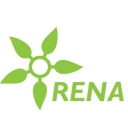Regional Seminar on Protected Area Management and Development of Tourism Infrastructure
Date: 02-03.12.2015
Place: Istanbul, Turkey
Organizer: ECRAN Secretariat with EC TAIEX Unit
Since the origin of contemporary concept of nature protection in 1870s, protected areas (PAs),
especially the large-scale ones, have been the most successful and efficient tool developed to
conserve biodiversity. In Europe, number and coverage of PAs have been increasing for decades, and
their positive impact on biodiversity conservation both inside and outside of them is indisputable.
Nevertheless, a significant part of them is either managed inappropriately or not managed at all. We
do have many so-called “paper PAs”, i.e., legally established areas which are neither protected not
conserved.
Tourism infrastructure is becoming a “hot issue” over the last years. We have been facing an
increasing pressure by politicians and public to open PAs to tourism activities, often without regard
to the requirements of conservation. On the other, there is an evidence of many adverse impacts of
visitors on biodiversity hosted by PAs. In that sense, tourism management and tourism infrastructure
should be utilized as a tool to regulate activities in PAs for the benefit of both biodiversity and
people.
This seminar is going to address both these issues. It is aimed at managers of PAs as well as staff in
charge of PAs at central level from the ECRAN region in order to provide you with best practice
examples of approaches in several selected countries and inspire them in their own work.
General Objective
To address two key issues in contemporary protected areas – their proper management, including
harmonization with requirements of Natura 2000 network, and tourism management.
Specific Objective
The first part of this seminar is aimed at showing current approaches of practical management of
protected areas and discussing both positive and negative examples at European scale, with a
special focus on management plans, their implementation and the importance of stakeholder
involvement. Important aspect is also harmonization of protection and management of national PAs
and Natura 2000 sites: without that, conservation objectives of these two conservation approaches
can compromise each other.
In the second part of the seminar, carefully selected lecturers will introduce current approaches to
tourism management in protected areas and ways how to implement them in various natural,
cultural as well as political conditions. A set of case studies from EU countries will serve as food for
thought and the subsequent discussion.
Expected Results of the meeting
The expected results include presenting examples from several EU MS in order to stimulate
discussion on possible approaches in countries with rich biodiversity but facing difficulties as regards
personnel capacity and funding, and harmonization of national PAs policy with Natura 2000
management will be one of the important topics.

